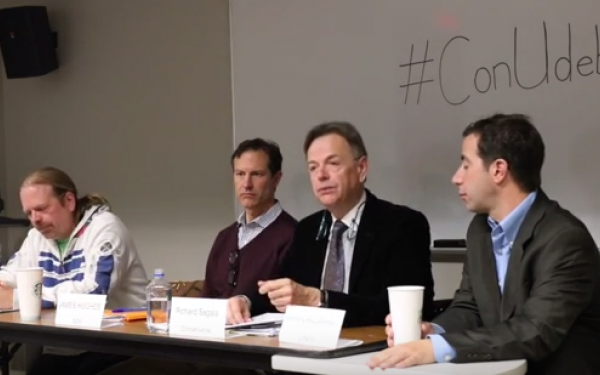The Steps to Making a Mural
Hip-Hop and Street Art: A New Outreach Program from Prevention NDG
Local outreach organization Prevention NDG is striving to provide an outlet to youth and artists in Notre-Dame-de-Grâce through its Urban Arts program.
Local outreach organization Prevention NDG is striving to provide an outlet to youth and artists in Notre-Dame-de-Grâce through its Urban Arts program.
Established in 1988 following an increase in home invasions, this organization aims to protect the community and improve quality of life. For 30 years, the organization has formed a number of projects with the ultimate goal of improving community conditions. It’s made up of different branches focusing on varying social fronts, from decreasing youth crime to green initiatives, community outreach to anti-hypersexualization and urban arts.
In 2005, the Urban Arts program was created in collaboration with A’shop, a local street artist collective, and hip-hop artist Marc Pagliarulo-Beauchemin, also known as Égypto. The program supported the organization of legal murals and outreach workshops to educate youth on the consequences of vandalism. It also showcased the talents from kids in the hip-hop community to alleviate societal prejudices.
The Urban Arts team includes A’shop muralist Guillaume Lapointe and Marc Pagliarulo-Beauchemin, a local musician and organizer of the annual Hip Hop You Don’t Stop festival.
Deeply involved in the beautification of city walls and art workshops, A’shop coordinator Roskoe Idiosti said the workshops “help channel those energies by giving youth the confidence and resources to make more out of their talents.”
Walking through NDG, there is no shortage of graffiti. For many years, tags have been a nuisance to home and business owners alike, with spray paint left caked onto walls at nearly every street corner.
However, Prevention NDG has been trying to rectify this. Working alongside A’shop, they’ve been turning those street-corner eyesores into beautiful murals.
Through the art-positive initiative, mural crews are contracted by the city.
A woman draped in yellow fabric walks gracefully through a cityscape of NDG landmarks. Surrounding her are birds, squashes and flowers. The mural entitled “Our Lady of Grace,” made with funding from Prevention NDG’s outreach program, has become a neighbourhood favourite.
“[They were] one of the first organizations to believe in what we do,” said Idiosti.
Local NDG graffiti artists Germ and Blaze expressed respect for A’shop and its collaborative involvement in the community. “It makes the city nice and attracts out-of-towners to come paint walls,” said Blaze.
“I like their involvement, would like to see more and more walls in the hood,” added Germ, who is currently not involved in the legal graffiti initiative.
Idiosti gives kudos to Prevention NDG for creating a market for street art crews and the unique skill set that comes with being a muralist. “They allowed us to show the talents that we had all along but did not have the resources to accomplish. They invested in the future of Montreal mural arts,” he said.
“They allowed us to show the talents that we had all along but did not have the resources to accomplish. They invested in the future of Montreal mural arts.“— Roskoe Idiosti
While the art form is evolving and murals are becoming widely appreciated, the future of the subculture will be determined largely by the next generation of artists. “It’s better that the youth stay out of trouble,” quipped Blaze. But whether those kids will look for legal opportunities or give in to vandalism remains to be seen.
“Graff awareness could be bad if it takes away from the art form,” said Germ. “It’s something you have to learn on your own.”
Much like the street-art scene, hip-hop culture also tends to be looked down upon by society as rebellious, vulgar or even criminal for promoting violent or hateful rhetoric. While this may be true for certain artists, even aggressive music stems from creativity that its audience can relate to. Considering the influence hip-hop has had on graffiti, public perception has a biased resentment towards the sub-cultures that speak out against the establishment.
Pagliarulo-Beauchemin has been hosting the Hip Hop You Don’t Stop festival in NDG for the past 11 years, trying to bring to light the positive facet of hip-hop music.
Owner of his own record label, he organizes a yearly weekend event at Girouard Park, Elementakiza. The name comes from a collaboration in 2013 with Elementality—a major hip-hop media outlet—and a play on words from ‘takiza,’ a Mexican barbecue where tacos are served. The goal of the festival is to “demystify what hip-hop culture is,” said Pagliarulo-Beauchemin. The event is a platform for youth to get involved in the hip-hop movement, where they can benefit from public exposure and networking within the community.
Detroit recording artist Illa J, who performed at the 2016 edition of the festival, fosters an encouraging and positive outlook on hip-hop and expressing yourself that has influenced the larger community today.
“Yo, keep following your dreams—don’t ever stop. Can’t nobody ever stop you but yourself,” said J at the Hip Hop You Don’t Stop festival on Sept. 23.
“[The festival] is a great assembly point, making the hip-hop culture accessible and easy to understand in the eyes of people who might not,” explained Idiosti.
As Prevention NDG’s Urban Arts program begins planning for next year’s events, A’shop will be hunting down contracts to paint murals this spring, and hopes to work with the city’s mural program in 2017.

_600_832_s.png)

2_600_375_90_s_c1.jpg)

